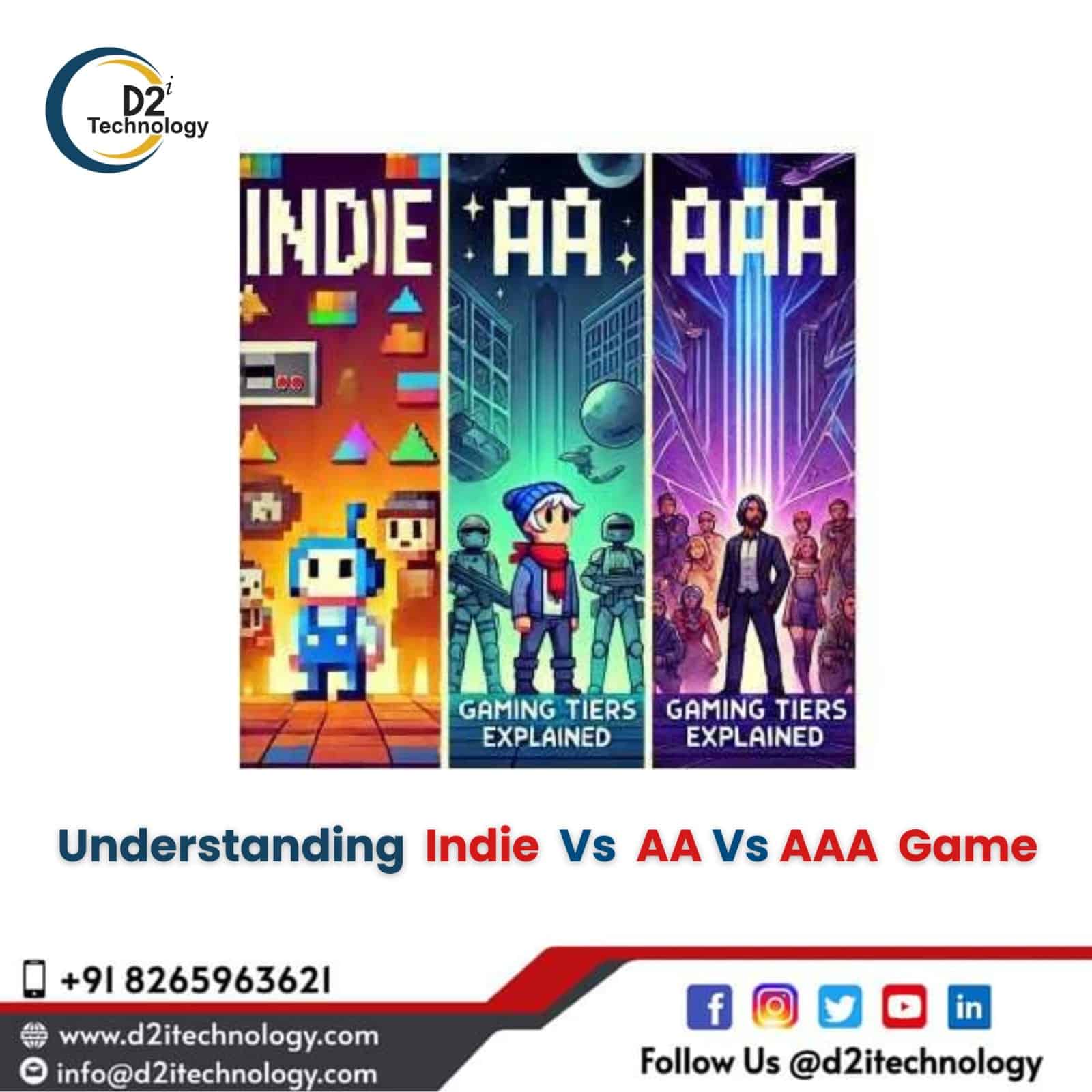- IT Services
- November 15, 2024
- admin
- 0 Comments
Understanding Indie, AA, and AAA Games: The Differences That Shape Your Gaming Experience

The gaming industry is vast and diverse, ranging from small indie titles to massive AAA blockbusters. Each category—Indie, AA, and AAA—offers unique gameplay experiences, varying levels of graphic quality, and different approaches to storytelling and gameplay. Understanding these distinctions can help gamers and enthusiasts appreciate the creative, technical, and financial factors that go into making games. Let’s dive into each category, their typical characteristics, and what makes them stand out.
Indie Games: Creativity on a Budget
Indie games are often passion projects, created by small teams or even individual developers. With fewer financial resources, these developers focus on unique mechanics, storytelling, or nostalgic gameplay, rather than high-end graphics or intensive production. Indie games embrace creativity and innovation, often testing ideas that larger studios may shy away from.
- Examples: Many indie games offer simple yet engaging experiences, such as the puzzle-solving in Candy Crush, the retro appeal of Snake, or the timeless fun of Pac-Man. Some indie shooters have also gained popularity for their straightforward mechanics and classic feel.
- Appeal: Indie games cater to both casual and hardcore gamers, offering accessibility and affordability. These games are often available on mobile, PC, and small consoles, providing quick and engaging gameplay experiences without the need for high-performance hardware.
Indie developers are known for their ability to take creative risks. Without the pressure of massive financial investments, they can experiment and bring fresh perspectives to the gaming world.
AA Games: Balancing Quality and Affordability
AA games sit between indie and AAA titles. They are typically produced by mid-sized studios with moderate budgets, focusing on polished gameplay and higher-quality visuals than indie games. These games aren’t as expansive as AAA games, but they strike a balance between production quality and cost, often resulting in highly playable, focused gaming experiences.
- Examples: Endless runners like Temple Run and Subway Surfers exemplify the AA category, as they deliver smooth, visually appealing gameplay within a defined framework. Minecraft, though initially an indie game, can also fit into the AA space due to its straightforward graphics and accessible gameplay.
- Engine Compatibility: Unity is frequently used in AA game development for its versatility and cost-effectiveness. Some developers also use Unreal Engine, particularly when they want to achieve more advanced visual effects. These engines allow AA games to have strong production quality without requiring the massive budgets typical of AAA titles.
AA games often target specific niches or gameplay styles, providing higher production values than indie games without the intense time and budget commitments of AAA projects. This balance enables AA games to be both affordable for players and sustainable for studios.
AAA Games: The Blockbusters of the Gaming World
AAA games represent the pinnacle of the gaming industry in terms of budget, production, and marketing. Created by major studios, these games often have multi-million-dollar budgets and are marketed to audiences worldwide. AAA games are renowned for their cutting-edge graphics, complex mechanics, and immersive storytelling, delivering the full-fledged gaming experiences many players seek.
- Examples: Popular AAA titles like PUBG, FIFA, and Call of Duty are known for high-quality visuals, extensive multiplayer capabilities, and realistic gameplay. These games often leverage the latest technology, from high-resolution graphics to real-time physics, to create an immersive experience for players.
- Game Studios: Titles like FIFA, developed by EA Sports, and Call of Duty involve extensive studio services, including dedicated teams for motion capture, graphic design, and sound engineering. High-end engines like Unreal Engine are often chosen to create stunning visuals, while some studios opt for proprietary engines designed specifically for their games. This level of production requires large teams and advanced technology, making AAA games the most resource-intensive in the industry.
AAA games aim to deliver the most comprehensive and immersive experiences possible, appealing to dedicated gamers who want high-quality graphics, complex storylines, and engaging gameplay. With the backing of major studios, these games are released on multiple platforms, including consoles and PCs, and receive global marketing campaigns.
Final Thoughts: A Diverse Gaming Landscape
The world of gaming is rich and varied, offering experiences for every kind of player. Whether you’re a fan of indie games that focus on creativity, AA games that provide polished experiences without breaking the bank, or AAA games that push the boundaries of technology, there’s something out there for everyone.
Each category serves a unique purpose, shaping the gaming industry in its way. Indie games bring innovation and experimental mechanics; AA games deliver quality experiences that are accessible and affordable; and AAA games provide fully immersive adventures for players worldwide.
Latest News

Transform Your Business with Top Web Development
June 30, 2025

Steps to Optimize Your Manual Testing Process
June 16, 2025
Category
- Accessibility Services (19)
- Accessibility Testing (6)
- Application Development (5)
- Automation Testing (4)
- CDN Technology (1)
- Developer Tools (5)
- DevOps (28)
- DevOps Consulting Companies (2)
- DevOps Services (2)
- Digital Marketing (5)
- Game Testing (1)
- IT Services (8)
- Manual Testing (6)
- Mobile Development (4)
- Operating Systems (2)
- SecOps (1)
- Security (1)
- Software Development (2)
- Software Quality (2)
- Software Testing Companies (1)
- Testing (1)
- Uncategorized (4)
- Web Application (2)
- Web Designing (3)
- Web Development (6)
- Web Development Companies (6)
- Website Accessibility (16)
- Website Services (3)
- WordPress (2)
